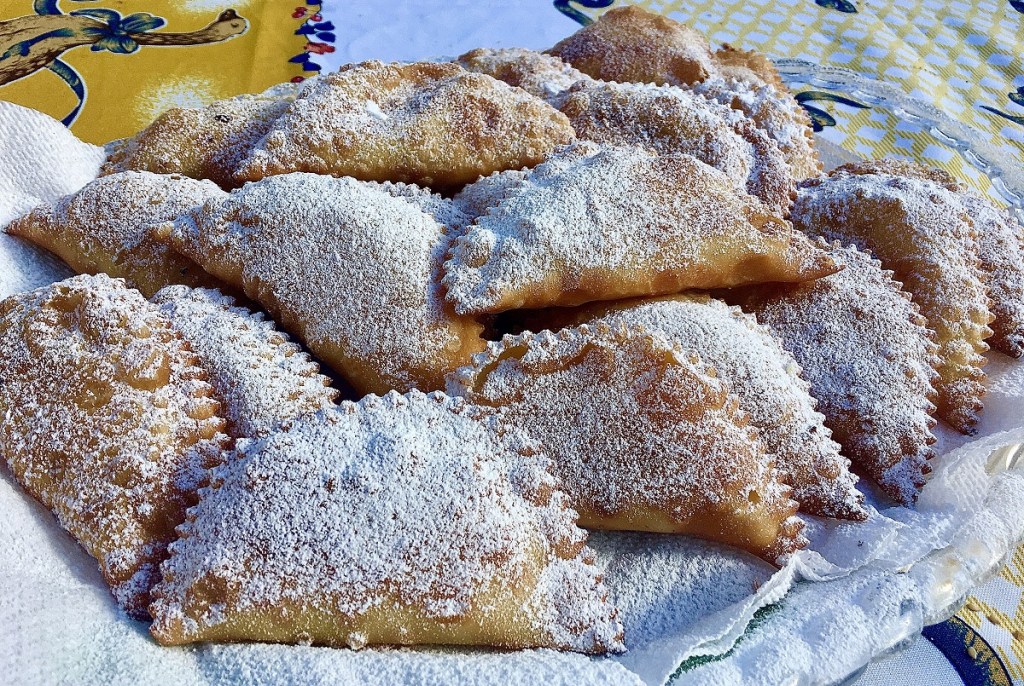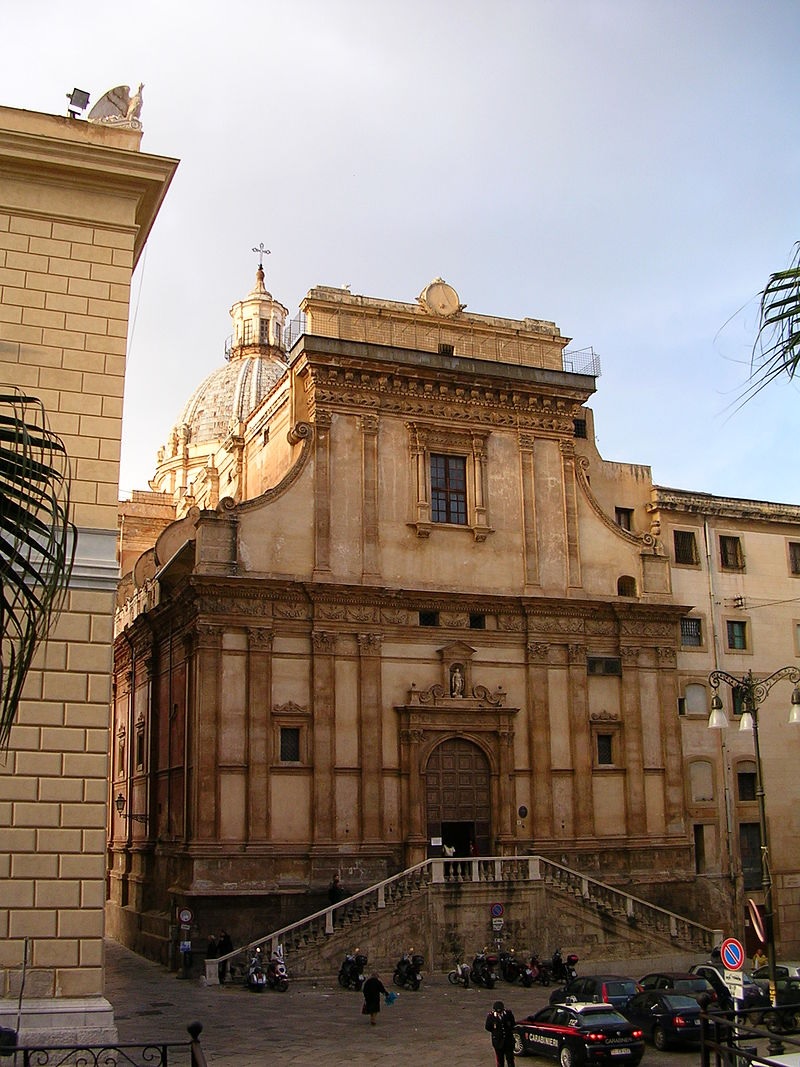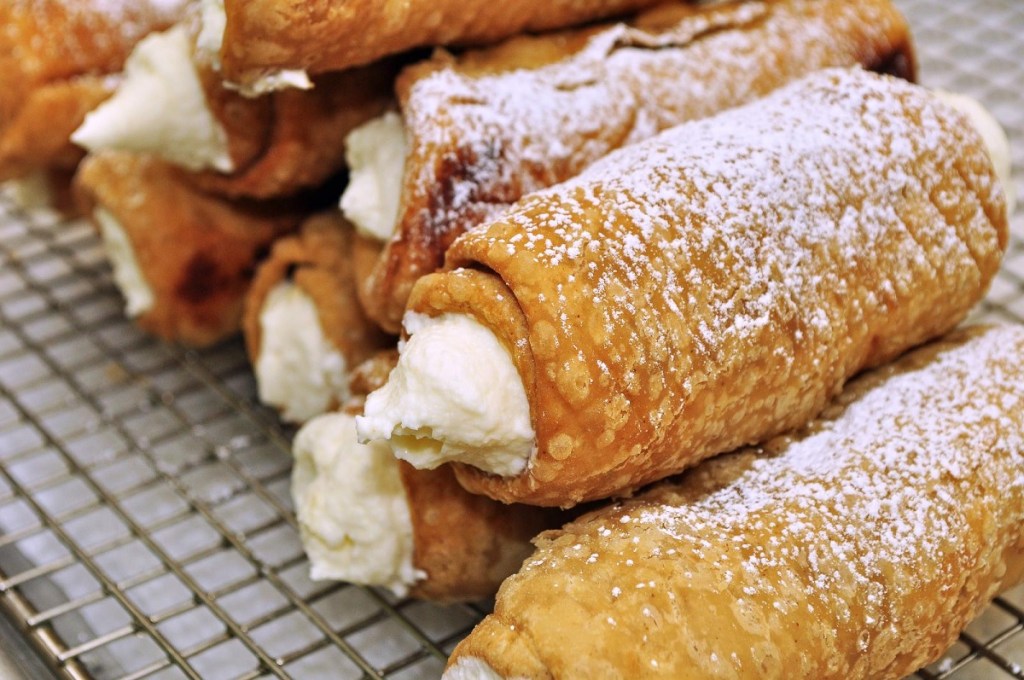From cannoli to almond biscotti, passing through cassatelle — semi-circular dough pockets filled with ricotta — we owe much of Sicily’s wonderful pastry culture to the creativity of cloistered nuns who, since at least the 13th century, turned the simple ingredients they could source locally into signature desserts.
As explained in a recent Aleteia story, this tradition has roots in the Middle Ages when nuns used to bake sweet goods like biscotti to gift them to high profile visitors such as bishops, doctors, or accountants. In the second half of the 15th century, sugar became more commonly available and this pastry-making tradition started to expand, with nuns making all sorts of sweet creations to sell.
For centuries, Sicilians were used to visiting monasteries such as the Monastery of the Holy Spirit, founded in 1299 in Agrigento, or the Benedictine convent of Palma di Montechiaro, during festivities. Here, they patiently waited for their turn to buy trays of freshly baked cannoli, cassatelle or nucatili — hard cookies filled with nuts and cinnamon.
In recent years, many of these monasteries have shut down. It is estimated that there were as many as 21 pastry-making convents in Palermo in the 18th century while today there are only a few left. As cloistered nuns progressively disappeared from Sicilian life, the centuries-old recipes that they had devised were on the verge of being lost. But the love Sicilians have for these nun-invented pastries is helping preserve this long-standing tradition.

In Palermo, the Convent of Santa Caterina had been a source of nun-made pastries for at least 700 years. Locals vividly remember the scent of pastries baking as they walked in the square outside the convent to attend Mass or to visit the church for confession. But in 2014 the last remaining cloistered nun of Santa Caterina monastery left Palermo. The convent, a large structure centered around a beautiful citrus-tree lined cloister, was turned into a museum. Locals were happy to be able to keep visiting the monastery, albeit as a museum, but many people felt nostalgia for the time when cinnamon scent would permeate the air around the convent.

In 2019, a group of local entrepreneurs re-opened the historic kitchen that had been in use at the convent for centuries. The bakery, called “The Secrets of the Cloister,” is open every day from 10 to 6 and it is considered more of a laboratory than a conventional pastry shop. Here, pastry chefs can host open lessons about the making of a particular pastry or explaining how an old recipe was first conceived.
Everything is baked according to tradition, save for the use of a single mechanical dough roller that was introduced to speed up operations.

During the week the shop produces cookies, pastries and sweets, including the renowned candied citrus peel and cannoli filled right on the spot, while on the weekend it serves more elaborate items such as cassata, a round sponge cake filled with liqueur, ricotta cheese and candied fruits, and minne della Vergine, literally “breasts of the Virgin,” dome-shaped pastries filled with milk, candied pumpkin, chocolate and cinnamon.
“Many tourists come to visit us following the advice of pastry chefs,” said Maria Oliveri, one of the founders of the “Secrets of the Cloister,” in an interview to Italian food magazine Gambero Rosso. “Chefs advise people to come here to rediscover the origins of Sicilian pastry makers.”
In 2019, Oliveri published a book titled The Secrets of the Cloister, outlining all of the nun-made recipes that she has encountered during her research about pastry culture in cloistered monasteries in Sicily.
The book was completed to maintain, as she puts it, “an important spiritual and material heritage that should never be forgotten but rather preserved for future generations.”
One of the revelations found in the book is that over and above pastries, cookies and cakes, nuns used to cook dishes like eggplant lasagne, stuffed olives and sfincione, a sponge like focaccia topped with tomato sauce.
Behind every great Sicilian dish there seems to be a great nun recipe (that needs to be preserved).



